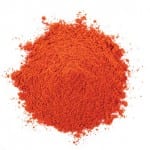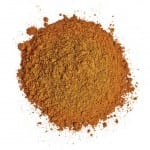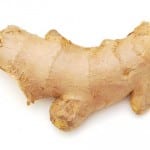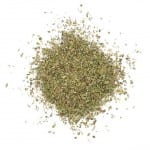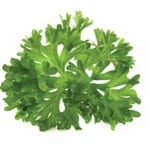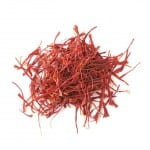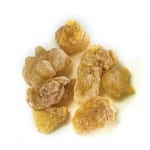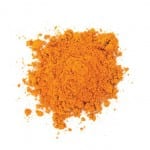In Eastern medical tradition, the whole is more important than the sum of its parts; mind, body, and spirit are closely interrelated. All elements of a person are integrated and dependent on each other for balance and strength. When one part of the body is injured, imbalance is created, and the person is weakened. While Western medicine waits for a disease to treat, Eastern healing emphasizes health through nutrition, herbal medicine, massage, acupuncture and movement. More and more these days, Western medicine is looking East for new ways to lead healthy, pain-free lives. This doesn’t mean seeking out a one-time treatment for what ails us, but changing our habits and behaviors over the long term to maximize wellness.
[back to back]
Functional medicine is a branch of health care that asks the question, Why? Tracey Cain is doctor of chiropractic at the Functional Medicine Studio, which specializes in this approach. “In my particular field,” she says, “we are trained to look deeper. Why does your back hurt? Why is your thyroid not working?” It is a systems approach to illness, she says, that doesn’t only treat symptoms of illness, but also looks for root causes. “We assess genetic, environmental and lifestyle factors that may contribute to health matters,” Cain says. “And we always ask ourselves how a problem might be solved without medication.”
In order to understand the causes of pain and discomfort, Cain combines chiropractic treatment with tests for thyroid, blood and hormone levels, and counsels patients on nutrition and exercise. She emphasizes the importance of routine maintenance for back and other problems. “We take care of our cars better than our bodies,” she says. “But we don’t get to turn our bodies in when the lease is up.” This maintenance could be anything from an adjustment every four to six weeks to regular exercises for strength and flexibility. Cain says she preaches also about the benefits of proper sleep and is concerned that people are not getting it. She attributes this to our use of technology. “We are not giving our bodies sufficient time to de-stress away from screens,” she says.
Like Cain, Dr. Rob Elder of Metro Chiropractic and Nutritional Wellness Center also thinks about the body holistically. He says he knows firsthand the difference chiropractic treatment can make, having suffered from a chronic shoulder injury at age 22. After about 15 sessions of neck and spine adjustments, he says he was pain-free and avoided having to have the surgery doctors recommended. Elder says he was so fascinated by the success of his treatment, he switched from medical school to chiropractic college.
Elder’s area of chiropractic specialty is BioPhysics, which is based on physics, engineering and linear algebra. He says he doesn’t employ the “snap, crackle and pop” of traditional chiropractic, but instead analyzes angles, torque and gravitational force lines to identify areas of spinal dysfunction. He then uses an instrument, which works by vibration to restore balance to the neck and spine. “It’s like taking a messy stack of poker chips and tucking them neatly into line,” he says. While the initial goal for patients is pain relief, the greater aim is the continued ease of movement, he says.
Elder, who is certified in nutrition response testing, also uses noninvasive muscle tests to discover underlying nutritional deficiencies. “The patients of today are very different from what they were 100 years ago,” he says. “Then, they ate food. Now, they eat products.”
[it’s physical]
Physical therapy (PT) is thought to have been practiced first by Hippocrates in 460 B.C. when he introduced the idea that pain could be relieved by manual manipulation. Ancient writings from China, Egypt and Persia talk about the benefits of movement and exercise. Increasingly, physical therapy—the treatment of injury by physical methods—is considered to be an integral part of healing. “We are dedicated to physical function,” says residency-trained manual therapist Steve Easterday at St. Louis Physical Therapy- Ellisville. “Quite simply, PT helps people move better.”
Easterday says PT took off in the U.S. during and after World War I, when injured soldiers were treated by military personnel trained in the art. While some conditions (like bone spurs or torn cartilage), require surgery, he says physical therapy often can help avoid it. Manual therapy is a newer, more hands-on practice that focuses on quality of movement, rather than repetition of movement, Easterday explains. Because people are more active these days, he says the demand for PT is greater than ever. “We are also living longer so we are active longer. We aren’t content to take to our rocking chairs.”
“The most important role we have,” says Dan Kelley, physical therapist and owner of Physical & Sports Therapy Services, “is helping people help themselves. We recommend exercises both to solve the present problem and provide the patient with tools to prevent future injury.” Initially, Kelley conducts a thorough evaluation to understand the issue and then uses manual therapy to move joints or mobilize soft tissue. The success of treatment, he says, is dependent largely on a patient’s compliance to carry out the exercises prescribed.
Kelley—whose specialty is muscular-skeletal disorders—has been a PT for 43 years. He opened his business in Clayton in 1983 and says since then, he has seen PT become much more respected by the medical profession and the public. “Nowadays, we are considered to be much more than just supportive care. In a lot of cases, people will go to a therapist before a physician,” he says, but notes that in Missouri, a patient still needs a doctor’s referral for insurance coverage. Like Easterday, Kelley says he certainly has seen a rise in demand due to increased longevity, and adds that he once treated a 104-year-old man for back pain.
[food as cure]
We are told we are what we eat. But according to the Centers for Disease Control, one third of adults in the U.S. are obese, and 75 percent of the country’s $2.8 trillion in health care costs is incurred from the treatment of chronic disease reversible by a healthy lifestyle.
Dr. Amy Davis of Crossing Back to Health in Creve Coeur also specializes in functional medicine with a particular focus on the digestive system. She says the majority of her patients have problems with ‘flora,’ the healthy bacteria in the gut critically important for the immune and nervous systems, energy production, hormone balance, detoxification and quality of sleep. “There are trillions of bacteria that reside in the intestine, and they easily can be thrown off balance by things like diet, stress and antibiotics,” Davis says. This bacterial imbalance leads to poor digestion and inflammation. The standard American diet (SAD ) is at the root of the problem, she says. “Processed and fast foods, high carbohydrates and sugars are all foreign to our system. Inflammation is the body’s immune response that launches an attack, resulting in weight gain, headaches, ‘brain fog,’ irritability and depression,” she explains.
To help reverse the imbalance, Davis recommends probiotics—healthy bacteria found in fermented foods and drinks like kimchi, sauerkraut, kefir and kombucha tea.
In addition to being a functional medicine practitioner and an M.D. who graduated from the University of Missouri-Columbia School of Medicine, Davis says she has an understanding of traditional Chinese herbal medicine. “We have to keep mind, body and spirit in harmony to counter the enormous stresses we live with today,” she says.
[know what’s good for you…]






